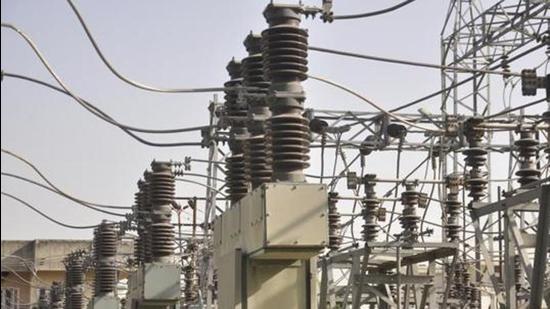The inside story of India’s coal and power crises
Simple arithmetic will show that power plants consumed more coal than they received, but given that generation wasn’t exceptionally high, does this mean the problem was supply?
Unprecedented. Unpredictable. A “perfect storm” of high demand, high global prices, and extended monsoons. All of these are common descriptors of how India came to have just four days of coal supplies left at power plants. These are all convenient but incomplete explanations. More than plain bad luck coming together in a perfect storm or any single issue, there was a wide gap in planning, coordination, and risk-taking. This problem also didn’t happen overnight or even in a month or two – it was many months in the making. Until we recognise these issues, this could happen again, and more so as India embarks on a high renewable energy future where uncertainty grows and planning becomes even more complex.

What happened?
Globally high prices?
It turns out India’s power plants don’t import that much coal, at least not most of them which are suffering (a few coastal plants dominate imports).
Huge demand for power?
It’s false to blame “unprecedented power demand”, 15-20% higher than the previous year, since last year was an outlier. This year’s coal power output during August was 10% lower than in April.
Simple arithmetic will show that power plants consumed more coal than they received, but given that generation wasn’t exceptionally high, does this mean the problem was supply?
Not really.
The real issue was lack of stockpiles. Supply varies both randomly and over the year, and power plants are meant to maintain a local stockpile. Coal India Limited (CIL) fuel supply contracts vary by each quarter of the calendar year, with the rainy season (third quarter) only getting 22% of the Annual Contracted Quantity (ACQ). Before and after this, each quarter gets 25%, but the January-March quarter is meant to be given 28%, partly in anticipation of the upcoming summer demand. Power plants failed to draw this share, for a variety of reasons.
During Covid (FY21), coal was the swing producer, and lower power demand was borne almost entirely by lower coal power generation. This led to “record stockpiles” per newspaper reports, to the extent that by April, there were stories expressing concern whether this would put a dent in plans for coal block auctions and even the need for private sector coal mining. What these reports failed to mention was that while total stockpiles may have been very high, most of this was with the miner, Coal India Ltd (CIL). Stockpiles at power plants fell over FY21 by half, to about 30 MT.
Even though this fall meant power plants allowed their stockpiles fall below their recommended levels, no one worried as things stayed stable for some months. The real problem wasn’t publicised till the end of September, when we stood at an average of four days supply, and alarm bells ensued. We panicked when coal stocks at power plants fell from seven days to four days from the end of August to the end of September. But no one did enough when in the prior month stocks fell by double, from 13 days to seven days.
Plants weren’t buying enough coal because of many complex reasons. They were (and remain) cash-strapped. The chain is weak as consumers delay payments to discoms (electricity distribution companies) who delay payments to power plants. With high uncertainty over demand, it became temporarily “wise” to use up onsite stockpiles over FY21. The narrative was one of surplus, not just of coal but of power plant capacity, and an individual plant always believed, that as a nation, someone else would always fill in. States were anyway wary of stocking up coal at expensive plants that rarely made it into the merit order dispatch, more so in conditions of uncertainty. But many individuals thinking on the same lines leads to aggregate problems. If Google Maps offers us an alternative side road as it’s empty but everyone sees that, it won’t remain empty for long.
Power plants changed gears and started asking for more coal precisely at a time when CIL was struggling to increase output. The extended monsoon was severe and many mines were flooded. Stockpiles are meant to handle such swings, but we didn’t have enough.
A small saving grace has been Indian railways, the main means of long-distance transport. Because passenger traffic is down, coal delivery currently takes half the time it normally did in the past. That still doesn’t make increasing delivery easy. Coal is a lumpy commodity, and not very liquid (no pun intended). A single large power plant might require two full trainloads (rakes) of coal every day. We can’t just increase deliveries by 10% – we have to add a full rake.
In a future piece, I will discuss what this means going forward, and what we need to do to make sure this doesn’t happen again. But one urgent issue I will flag right now is that we don’t have a proper system to get consumers to reduce their demand, which can be done much faster than supply can increase. Voluntary reductions might go a long way towards helping reduce or even avoid a crisis. These include steps such as aggressive control, lowering thermostats and colder/shorter bathing, leave alone actions by bulk consumers. Let’s not underestimate the potential of this– we saw huge reductions during the “nine minutes lights out” event last April.
If we don’t voluntarily do something about it, the alternative is a return to involuntary load control, or load-shedding. That’s already started in pockets. With coordination, we can lower demand at the peak, which will help even more. Will voluntary actions be enough? No one knows, and it doesn’t substitute for more coal delivery, but we should certainly try.
Rahul Tongia is senior fellow with the Centre for Social and Economic Progress
The views expressed are personal



